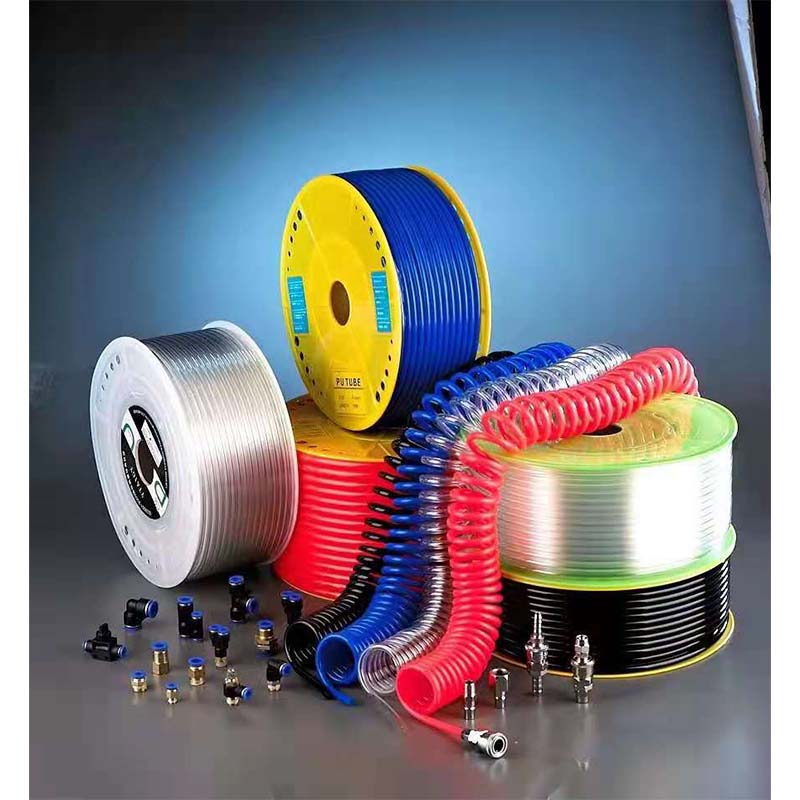Comparing PVC and Rubber Air Hoses for Performance and Durability
PVC vs. Rubber Air Hoses A Comprehensive Comparison
When it comes to pneumatic tools and air compressors, selecting the right air hose is crucial for optimal performance and durability. Among the most popular materials used for air hoses are PVC (polyvinyl chloride) and rubber. Each material has its own set of advantages and disadvantages that can influence your choice depending on your specific needs. In this article, we will explore the key differences between PVC air hoses and rubber air hoses, helping you make an informed decision.
Durability and Resistance
One of the most significant factors to consider when comparing PVC and rubber air hoses is durability. Rubber hoses are generally known for their exceptional resilience. They can withstand extreme temperatures and harsh weather conditions, making them suitable for outdoor use. Furthermore, rubber hoses are more resistant to abrasions and punctures, which is a significant advantage in rugged environments where wear and tear can occur.
On the other hand, PVC hoses are usually less durable than rubber. While they can perform well under typical indoor conditions, they may not hold up as well under extreme temperatures or in harsh weather. PVC hoses are more prone to cracking or becoming brittle over time, especially when exposed to sunlight or freezing temperatures. However, modern advancements in PVC technology have improved the durability of these hoses, making them a viable option for many applications.
Flexibility and Weight
PVC vs
. Rubber Air Hoses A Comprehensive ComparisonIn contrast, PVC air hoses are lighter, making them easier to carry and handle. This weight advantage can be significant for DIYers or professionals who require mobility while working. Additionally, PVC hoses are generally stiffer than rubber hoses, which means they can be more challenging to coil and store, especially in cold temperatures when they may lose some of their flexibility.
air hose pvc vs rubber

Cost Considerations
Pricing is also a critical aspect when choosing air hoses. PVC hoses typically come at a lower price point than rubber hoses, making them an attractive option for budget-conscious consumers. If you’re looking for an economical solution for light-duty applications, a PVC air hose might be the appropriate choice.
Conversely, while rubber hoses are generally more expensive, their durability often justifies the investment. If you require a hose that can withstand heavy usage and harsh conditions, opting for a rubber air hose is likely to offer better long-term value.
Application Suitability
Both PVC and rubber air hoses have their ideal applications. PVC hoses are commonly used in lighter tasks, such as inflating tires, powering airbrushes, or other low-pressure tasks. They are best suited for indoor environments and light use.
Rubber hoses, however, shine in more demanding scenarios. They are the preferred choice for industrial applications, construction sites, and other settings that require heavy-duty performance. Their ability to handle high pressures and severe conditions makes them indispensable in many professional settings.
Conclusion
In summary, the choice between PVC and rubber air hoses largely depends on your specific requirements. If you need an affordable, lightweight, and versatile option for light-duty applications, PVC hoses may be the way to go. However, if you require a durable, flexible option that can withstand harsh conditions and heavy usage, investing in a rubber air hose is likely a better decision. Assessing your needs will help you find the perfect air hose that ensures efficient operation for your tools and projects.
-
Top Quality Oxy Acetylene Hoses for Sale Fit for Welding DemandsNewsJul.28,2025
-
The Future of Pneumatic Air Tubes in IndustryNewsJul.28,2025
-
Superior and Reliable LPG Hose Pipe Solutions for Every NeedNewsJul.28,2025
-
Exceptionally Durable and Versatile Premium Braided PVC TubingNewsJul.28,2025
-
Best Adapters for Connecting Garden Hose to PVC Pipe ConnectionsNewsJul.28,2025
-
The Essential Role of LPG Hoses in Safe and Efficient Gas DistributionNewsJul.16,2025














